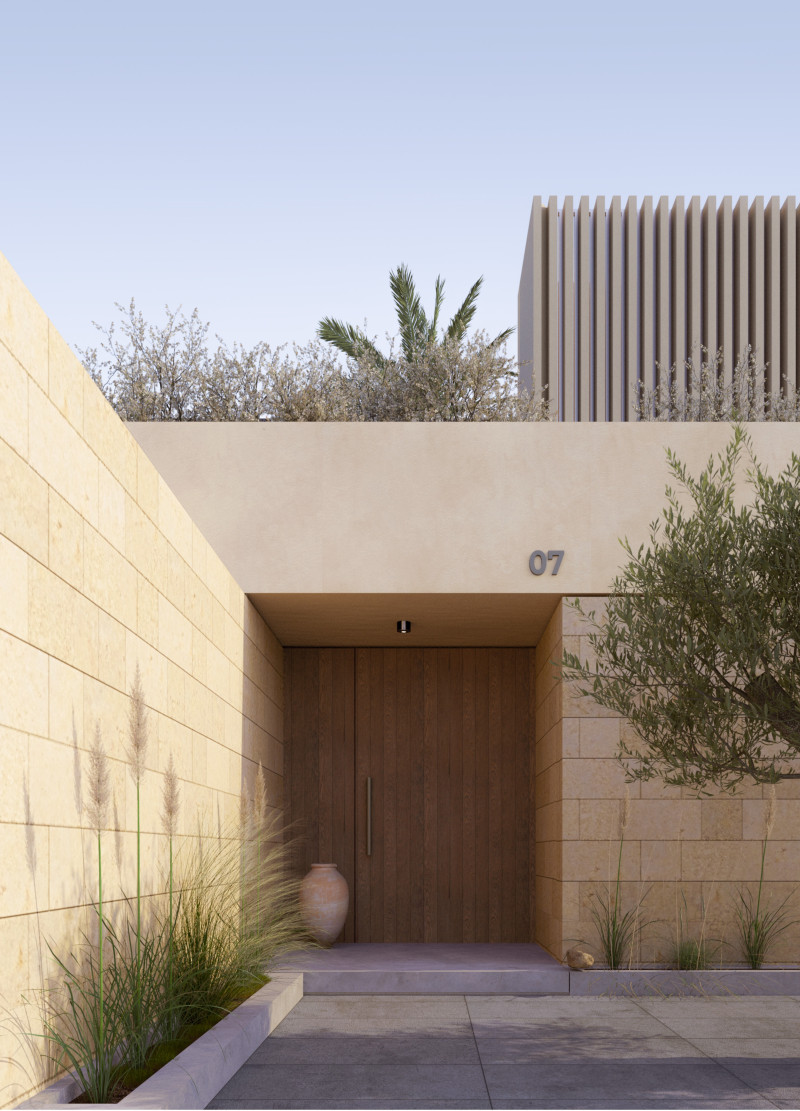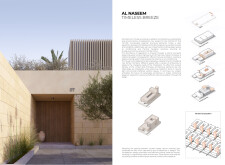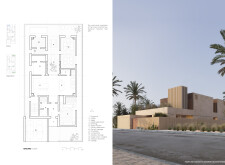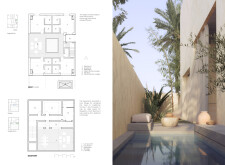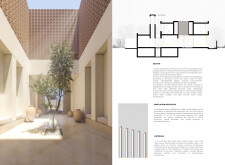5 key facts about this project
## Overview
Located in Dubai, UAE, the Al Naseem Timeless Breeze project embodies a relationship between contemporary architectural practices and traditional Emirati design. The intent of the project is to create a residential space that reflects local cultural heritage while addressing the climatic challenges of the region. By integrating elements such as wind catchers and latticework, the design promotes a connection to history while ensuring modern living standards.
## Spatial Configuration
The architectural layout adopts a north-south orientation to minimize direct sun exposure and heat gain. The ground floor incorporates defined functional zones, including living areas, dining spaces, and a prayer room, which serve both family dynamics and privacy needs. Shared spaces are designed to foster communal living while ensuring comfort and accessibility.
On the first floor, bedrooms and family lounges are arranged to enhance privacy and maximize natural light. Features such as terraces and wind catchers are strategically placed to promote ventilation, facilitating a connection to the outdoor environment.
## Materiality and Sustainability
Locally sourced materials play a crucial role in the project. High-inertia wall materials like limestone and stone aggregates are employed for their thermal mass properties, helping to maintain indoor temperatures. Timber elements are included for doors and structural accents, adding warmth to the interiors. Traditional clay and terracotta are used in the mashrabiyah, providing both shading and airflow.
Sustainability is a key focus, with passive cooling strategies integrated to diminish reliance on mechanical air conditioning. The wind catcher effectively captures cooler breezes and directs them into living spaces, enhancing indoor comfort. The design also features a vented ecosystem that optimizes air circulation between residences and water elements within courtyards, contributing to thermal regulation and humidity control.
These structural and material choices reinforce the project's commitment to blending cultural significance with environmental responsiveness, setting a precedent for future developments in the region.


